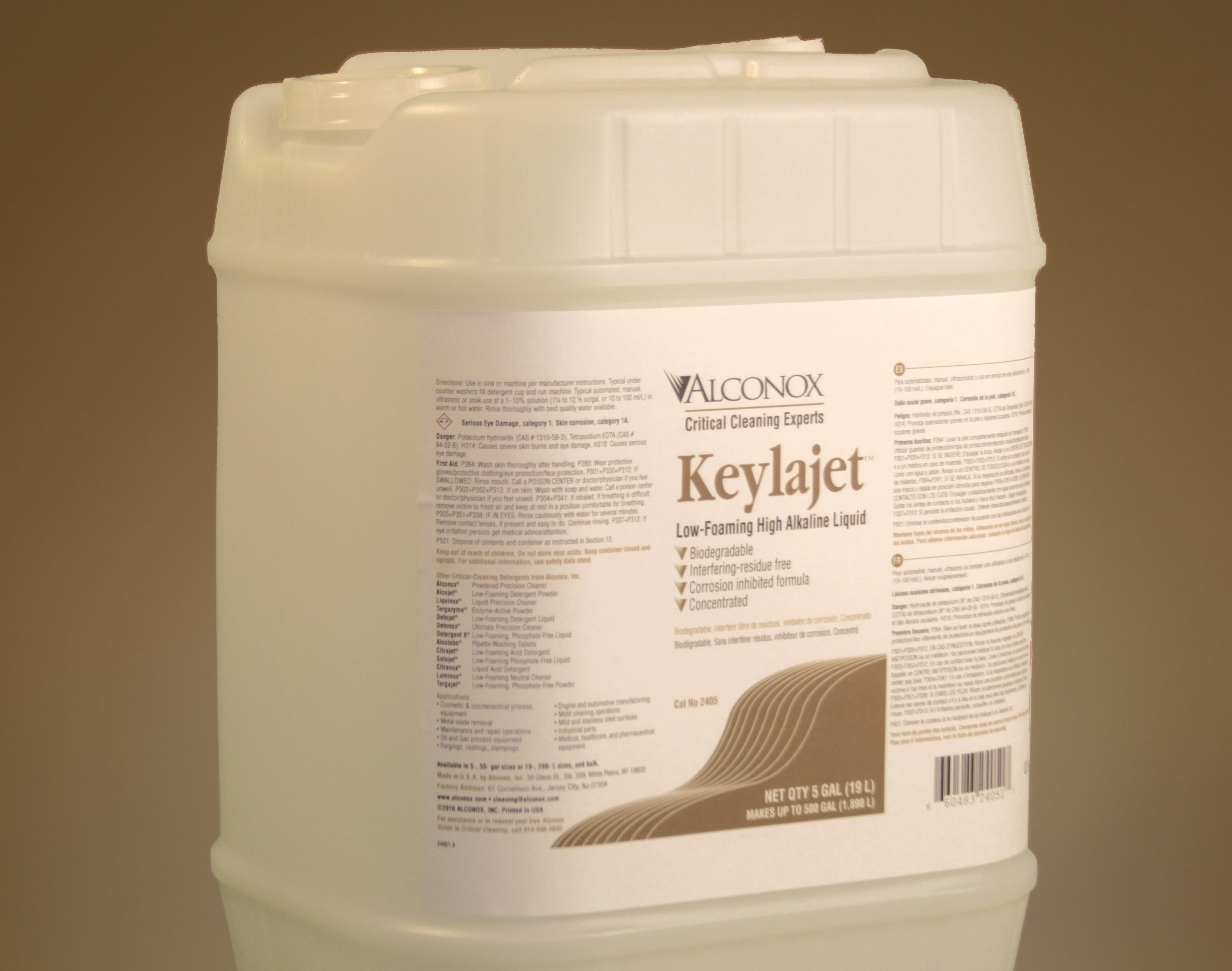Free Exhibit Pass to PMTS
Visit Alconox, Inc. at PMTS 2019 in Cleveland, OH, April 2-4, 2019. Your Exhibit Hall Pass is on us! Simply enter code EXH8420 at registration. Then, at the show, stop by booth #8090 to receive our unique gifts, expert technical support for your critical cleaning applications, and detergent samples.
Detergent Color Variations
Q. The color of our Liquinox is slightly different by lot number. Why is this happening? Is there an issue, perhaps we have done something wrong with storage?
A. Do not fear! These color variations are normal. There is a range of acceptable color differences in Liquinox detergent. Differences in the age and storage conditions of the raw materials and of the Liquinox detergent itself will account for differences in color
9 Steps to Successful Critical Cleaning: BATHOCARD
Q. Did you know there are nine different factors that determine successful cleaning? A. “BATHOCARD” a phrase coined by Alconox technical team.
High Alkaline Detergent on Steel?
Q. Are there ways to remove oxidation on stainless steel without acidic detergents? We are looking to simplify our process and avoid low pH. A. While citric acid based oxidation removal and passivation is our preferred method due to its safety profile, there are ways to remove oxidation from steel with alkaline detergents.
Visit Us at FABTECH in Atlanta
Visit Alconox, Inc. at FABTECH 2018, November 6-8, in Atlanta at the Georgia World Conference Center. Stop by booth #B4916 to receive our unique gifts, expert technical support for your critical cleaning applications and detergent samples.
Our critical cleaning detergents remove an array of soils while leaving no interfering residues in applications for precision manufacturing, medical device manufacturing, electronics manufacturing, photovoltaic manufacturing and more.




